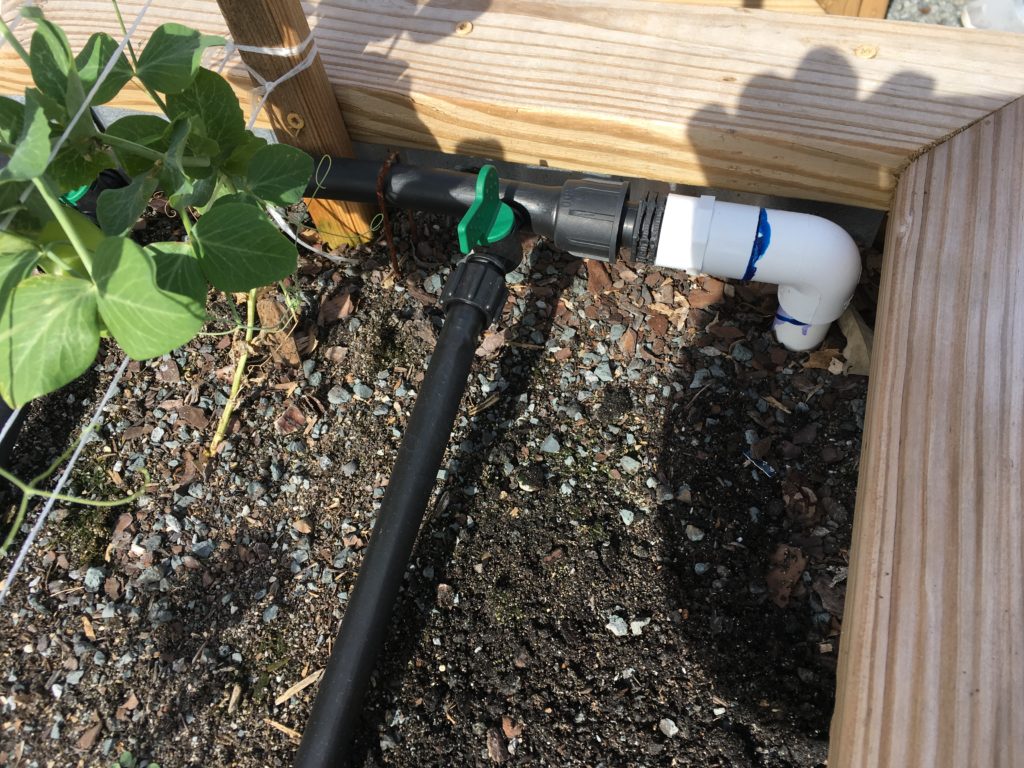Smart Watering in the Garden
go.ncsu.edu/readext?710781
en Español / em Português
El inglés es el idioma de control de esta página. En la medida en que haya algún conflicto entre la traducción al inglés y la traducción, el inglés prevalece.
Al hacer clic en el enlace de traducción se activa un servicio de traducción gratuito para convertir la página al español. Al igual que con cualquier traducción por Internet, la conversión no es sensible al contexto y puede que no traduzca el texto en su significado original. NC State Extension no garantiza la exactitud del texto traducido. Por favor, tenga en cuenta que algunas aplicaciones y/o servicios pueden no funcionar como se espera cuando se traducen.
Português
Inglês é o idioma de controle desta página. Na medida que haja algum conflito entre o texto original em Inglês e a tradução, o Inglês prevalece.
Ao clicar no link de tradução, um serviço gratuito de tradução será ativado para converter a página para o Português. Como em qualquer tradução pela internet, a conversão não é sensivel ao contexto e pode não ocorrer a tradução para o significado orginal. O serviço de Extensão da Carolina do Norte (NC State Extension) não garante a exatidão do texto traduzido. Por favor, observe que algumas funções ou serviços podem não funcionar como esperado após a tradução.
English
English is the controlling language of this page. To the extent there is any conflict between the English text and the translation, English controls.
Clicking on the translation link activates a free translation service to convert the page to Spanish. As with any Internet translation, the conversion is not context-sensitive and may not translate the text to its original meaning. NC State Extension does not guarantee the accuracy of the translated text. Please note that some applications and/or services may not function as expected when translated.
Collapse ▲In the hot summer months, we often focus on watering to keep our plants in the landscape and garden alive. With water being one of our most important natural resources we want to make sure that we conserve water and avoid wasting it. There are simple steps you can take to conserve water but yet still keep your garden alive and growing during the summer.
Below are tips that you can put into effect and water smartly in your own garden and landscape:
- When preparing to plant, add organic matter (aka compost) to the soil. Organic matter increases water-holding capacity of the soil, especially in sandy soils.
- Mulching around plants in landscape and gardens not only control weeds but will reduce water loss from the soil due to evaporation.
- Touch the soil to determine when to water. Moist soil will hold together better in a ball than dry soil. Avoid watering plants on a schedule just for the sake of watering.
- Switch overhead watering to soaker hoses and drip irrigation where possible. This can reduce landscape water use by up to 50 percent. Much water from overhead watering is loss to evaporation before it even reaches the plant roots.
- When hand watering, water at the base of plants instead of over top the leaves. This allows more water to reach the plant roots before evaporating and discourages plant diseases by keeping the leaves drier.
- Water deep and less frequently. Lightly watering plants every day does not encourage a deep root system that plants need to better withstand dry periods. Instead, soak the soil to a depth of at least 6 inches to encourage roots to seek water.
- Water early in the morning instead of mid-day to reduce water loss to evaporation.
- Many plants are often tougher than we give them credit for. All plants will need routine water after planting to get them established for usually the first year. However, established trees and shrubs should be able to thrive without regular watering unless we have a serious drought. Vegetables and container gardens will probably require more frequent watering during the growing season.
- Install a rain sensor or soil moisture sensor on your irrigation system. This will prevent your irrigation system running when we have had plenty of rainwater.
- Avoid watering the sidewalks, driveway and other hard surfaces. Instead, direct irrigation heads and sprinklers so that the water is only going to plants and lawn.
- Install rain barrels to collect rain water from the roof top. One inch of rain on a 1,000 square foot roof is equal to over 500 gallons. That is a lot of water which can be collected and reused in the garden. Not only will rain barrels conserve water but will also save on the water bill.
- Plant drought tolerant plants when possible. Once these plants are established, drought tolerant plants will not need regular watering and will thrive during hot, dry weather.
Jessica Strickland is an Agriculture Extension Agent, specializing in horticulture for North Carolina Cooperative Extension in Wayne County.
Learn More!
- Sign up for Wayne County Extension Gardening email list to receive timely gardening tips.
- Learn more by following us on Facebook and Instagram





